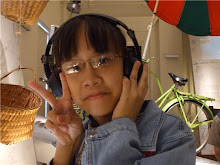Two Girls Born Without Thigh Bones—and Separated by a Thousand Miles—Share a Bond
Lilly!" screams Maya Albert, a 6-year-old burst of energy as she flings open her front door on a Friday afternoon. "You're here, Lilly! I've been waiting and waiting and waiting!"
The object of this little girl's affection, Lilly Stiernagle, two months older and a bit more reserved, steps into Maya's Pflugerville, Texas, home after an 1,100-mile car ride from Easton, Minn. The two girls share a tight, enthusiastic hug, a moment that ends with Maya screaming, "I got you a present, Lilly! You have to open it!"
With parents and other siblings in tow, the two girls race toward Maya's room, where they bend at the waist and crawl side-by-side, giggling and opening the presents. Both girls can walk, but crawling is sometimes easier. They have, in their words, "little legs," which is easier than pronouncing the name of the severest form of the rare birth defect they share: Proximal Femoral Focal Deficiency. The girls are missing their thigh bones and kneecaps, leaving only the tibia, the large bone that usually runs from the knee to the ankle. It is this condition—so uncommon that doctors aren't sure of its cause and lack solid numbers on how many people it affects—that first brought these girls together and that, in part, keeps them extraordinarily close. "I have a great friend named Lilly," says Maya. "When I need something, I ask her. We are the very same."
Those similarities were initially a shock to their parents. When the Alberts and the Stiernagles learned their daughters had PFFD in early 2002, both couples went through an emotional arc that ran from crushing disappointment to utter joy at having otherwise healthy babies. "When I held Maya, I was amazed at what a beautiful baby she was," says Natalie Albert, 33, a homemaker. (Maya's twin sister, Kirsten, was born without the condition.) "But I wondered if she'd be able to do the things that Kirsten could do and what her future would be."
As it turned out, Kirsten inspired her sister. A month after Kirsten rolled over, Maya did too. When Kirsten sat, Maya started trying to. And after Kirsten walked, it wasn't long before Maya was taking her own steps, albeit with a distinct waddle because her legs don't bend. "I could see it in Maya's eyes, concentrating on her sister," says Natalie. "She knew something was different with her but she would just keep trying."
Natalie and her husband, Ryan, 34, a network engineer, who also have a son, Brandon, 3, kept searching the Internet, not only for new treatments but also for kinship. In the fall of 2002, Natalie posted a request on a PFFD Web site asking other parents to contact her. It would be two years, however, before Jenny Stiernagle sent her an answer.
After Lilly's birth, Jenny, 28, and her husband, Bryant, 30, an accountant, breathed easier. "We loved her and held her and felt very blessed," says Jenny, a homemaker. They immediately put Lilly in physical therapy but grew frustrated that they couldn't find another case like hers locally. In 2004, however, Jenny finally learned of a PFFD Web site and saw Natalie's post. Excited, she sent an e-mail: "I came across your comment. I am interested in keeping in touch w/you and sharing stories and info about our girls." Natalie was shocked to receive a message after so much time had passed; she responded, and the two mothers began e-mailing several times a day. "We immediately started making plans to meet," says Jenny, who has three younger children, Lydia, 4, Erica, 2, and Ethan, 11 months.
The first meeting occurred in the summer of 2005, with Natalie and Maya making the 21-hour drive north. Maya and Lilly "gave each other hugs right away," recalls Jenny. And they sealed their friendship by flipping into the handstands at which both excel. "It was their way of saying hello," Natalie says, laughing.
The friendship had an instant impact. Lilly had been hesitant to try walking, but after seeing Maya bopping around, she gave it another try and soon became adept. The families learned from each other too. The Alberts noticed a stool Lilly used to help her reach things and bought one for their daughter. The families have exchanged ideas on converting everything from bikes to bathrooms to make them more accessible to the girls. They meet in person, in Texas and Minnesota, at least twice a year. "We inspire each other to try different things," says Bryant. "It's never too late for the girls to learn from one another."
When they are apart, Maya and Lilly pine for each other. "I wish Maya was here all the time," Lilly says a few weeks before making the trip south. Their personalities remain rather distinct. Maya likes jumping from her dresser onto her bed and playing soccer, while Lilly prefers drawing and downhill skiing. But their bond is so strong they can console each other long distance. After a little boy pointed to Maya's legs and called her ugly, she was distraught until she told Lilly about it. "We called when we got home that night," says Ryan, "and it made her feel better."
The girls, both about 30 inches tall, are a foot or so shorter than their kindergarten classmates. They sometimes get called "babies" but handle the teasing in their own inimitable styles: Maya shouts "I am not a baby!" while Lilly calmly reminds her peers that she is 6 years old. Doctors expect they may eventually need leg supports because their tibias won't be strong enough to support increasing weight. "Waddling to get from place to place is difficult. Eventually they may need wheelchairs," says Richard Haynes, Maya's former doctor, who is now a spokesman for the American Academy of Orthopaedic Surgeons. Doctors are uncertain whether appropriate prosthetics will ever be available for the girls.
But thoughts of wheelchairs and prosthetics are far away when the families come together. The visits are a time for sleepless slumber parties and polishing nails and doing handstands. Early one Saturday morning, Maya, Lilly and Kirsten grab bike helmets and scamper outside, where they race down the street on Maya's specially outfitted bikes.
As the wind suddenly picks up, whipping the trees in the front yard into a frenzy, Maya gets another idea. "Can we get the kites out?" she asks her dad. Ryan finds them and soon Maya and Lilly toss their kites—a bright red dinosaur for Maya, a purple butterfly for Lilly—into the air.
As the kites sail higher, Lilly, standing beside Maya, looks at her best friend and sighs contentedly.
"This is the bestest day ever," Lilly says.
Maya, her eyes lifted upward, can only agree.
"Yes," she says. "It really, really is."
THAT'S ALL FOR TODAY!!! ^_^
byebye

















